


Framed or unframed, desk size to sofa size, printed by us in Arizona and Alabama since 2007. Explore now.
Shorpy is funded by you. Patreon contributors get an ad-free experience.
Learn more.

- Freeze Frame
- Texas Flyer wanted
- Just a Year Too Soon
- WWII -- Replacing men with women at the railroad crossing.
- Yes, Icing
- You kids drive me nuts!
- NOT An Easy Job
- I wonder
- Just add window boxes
- Icing Platform?
- Indiana Harbor Belt abides
- Freezing haze
- Corrections (for those who care)
- C&NW at Nelson
- Fallen Flags
- A dangerous job made worse
- Water Stop
- Passenger trains have right of way over freights?
- Coal
- Never ceases to amaze me.
- Still chuggin' (in model form)
- Great shot
- Westerly Breeze
- For the men, a trapeze
- Tickled
- Sense of loneliness ...
- 2 cents
- Charm City
- What an Outrage
- Brighton Park
Print Emporium
Piper's Opera House: 1966
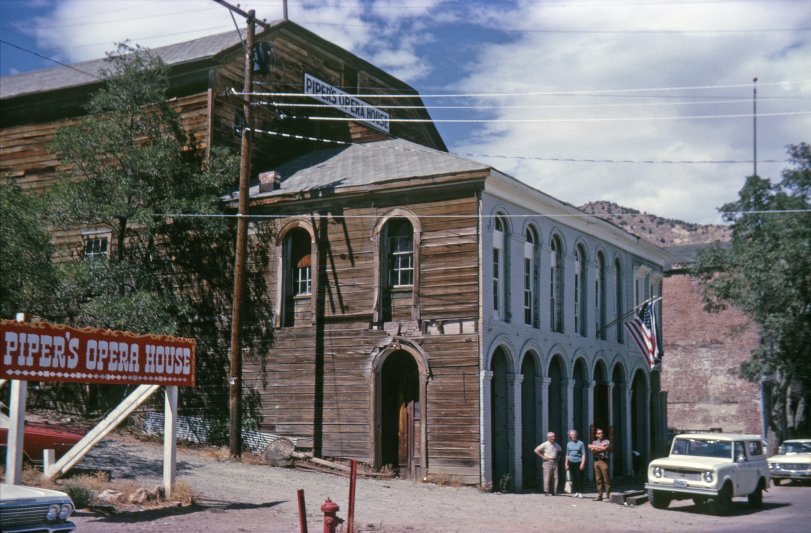
This time I was almost literally in Arthur Rothstein's footsteps when I took my Kodachrome slide of Virginia City's Piper's Opera House in August 1966, 26 years and some months after he was clicking his shutter. Had my family been there for him as they were for me, my father would have been 38, my mother 31 and my brother 2 going on 3. It would be another six years before they would be blessed by my existence. The photobombing International Scout wasn't the family car; our new Rambler wagon was parked some blocks away. View full size.
Rambler pitch in vain
In late 1966, my dad (a man who was tight with a buck) came to me almost in tears and begged me to intervene in a situation with my mom. She wanted a new Riviera GS, custom ordered from the factory. Fully loaded and with those nifty red-lined Kelly Springfield tires. My dad wanted her to accept, instead, a top-of-the-line Rambler Ambassador, which was one-third the price.
My mom and I really loved having that Riviera!
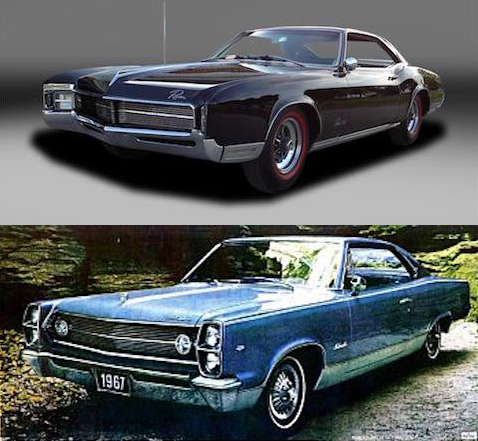
Dissenting vote
Those who had to endure being seen in a Rambler, as children or adults, have my sympathy. Sort of. Much later in life, my wife came home with an Eagle that ended up staying and was a pretty good car, after all.
In regards to tterrace's note about the way to VC being toward the left at the junction, well either way took you there, but the grade to the right was easier and less twisted (small margins here), and we referred to it as the "truck route". It all looks a lot different nowadays.
[Thanks for the nice words re: Ramblers, but I cast a dissenting vote on the Nevada 342 vs. 341 issue. 342 left, 341 right. -tterrace]
I meant that the ruling grade and curve was less, and I should have explained in my first post. See that one kink at the northern end? That is so tight that trucks cannot negotiate it, in addition to having a short,but very, very steep climb right in the curve. Thus the truck route. While it has a lot of bends they are of a negotiable degree for trucks. These days the RVs probably use it too, but there were none of them to speak of back then. The kink is called Griner's bend, but most folk called it grinder's bend.
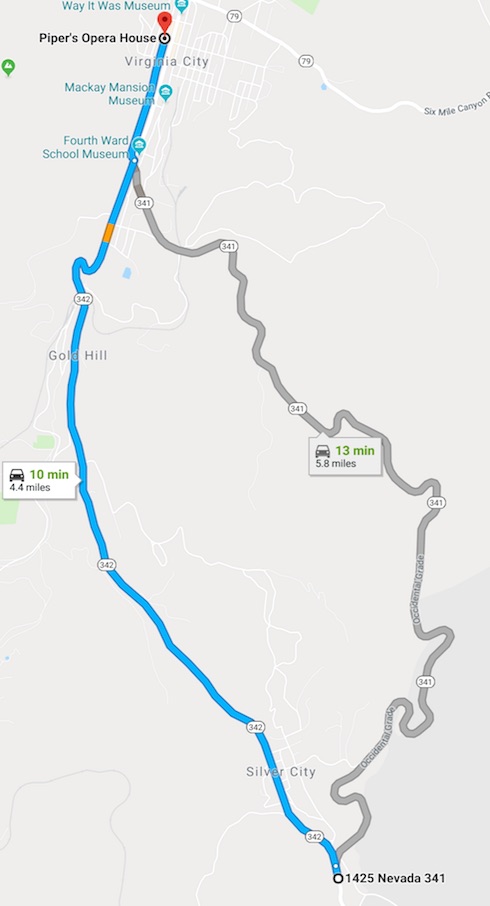
Ramblers everywhere
Omg! My family had a Rambler wagon in the 60's too. Pink and white, to haul us six kids around in the days when the four younger kids could ride in the back and my brother and I had the back seat. I think dad got it used and cheap, hence the pale pink color but it was truly conspicuous with all of us loaded up.
[Here's ours on that trip, just outside of Silver City, about to continue on to Virginia City, about ten minutes away on Nevada State Route 342, bearing left at the junction. -tterrace]

Construction for Jim
Looks like at least the front is made of brick covered with planks. Can see the bricks around the upper windows and where the siding is missing. Going by the "split" in the siding visible on the upper section in the old photo, the larger rear section is an addition. This site and the wikipedia entry are well worth a read; it confirms an addition. In 1863, John Piper purchased the brick office block that already stood at this location, now the entrance portion of the opera house, and established a saloon.
Fire Hydrants Through the Years
The first photo shows the fire hydrant in Arthur Rothstein's 1940 photo.
tterrace's 1966 Kodachrome has an updated hydrant installed.
The Googlemobile's Street View from 2015 in the third image has a modern style of hydrant in use.
There was a comment that Piper's Opera House hadn't burnt down ... yet. Hopefully the proximity to the hydrant might help. Homeowners receive a reduced fire insurance rate the closer they are to a fire hydrant.
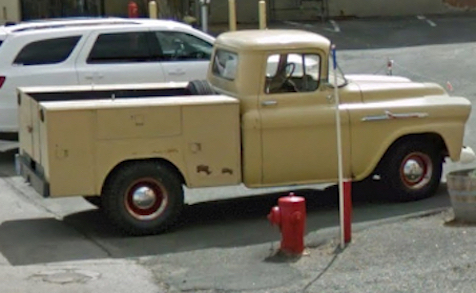
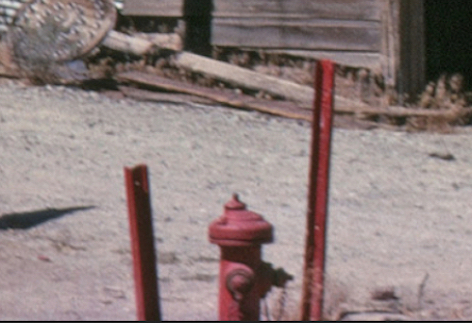
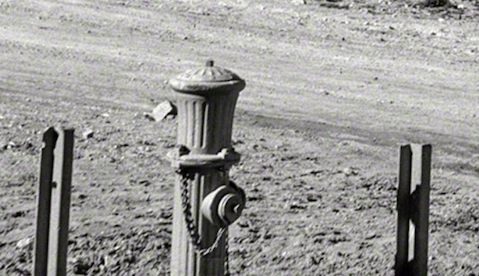
Is that normal out West?
I'm the first to admit I don't know anything about how buildings are made, but that place seems to be made of wood planks on the side with bricks on the front.
That's weird.
(Now my mission is to read the site linked and the Wikipedia entry to see that that circular light-display thing is. My initial thought is that it may be there to indicate when the play is coming back after intermission, but it seems awfully complicated for that.)
Full circle
The vent pipe seems to have not survived the 26 year interval, but whatever that disc is (light display?) has migrated from the front to the side of the building and appears likely to be on its way to join the pipe in the landfill.
edit: my pun appears to be unintentionally prophetic, as a look at the modern view shows the light display disk (or a reproduction of it) to be back on the front of the building!
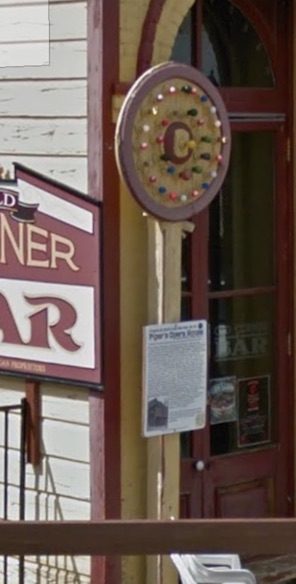
Close enough
I say it wins the TimeAndAgainPhoto award for standing in footsteps, however inadvertently.
























On Shorpy:
Today’s Top 5